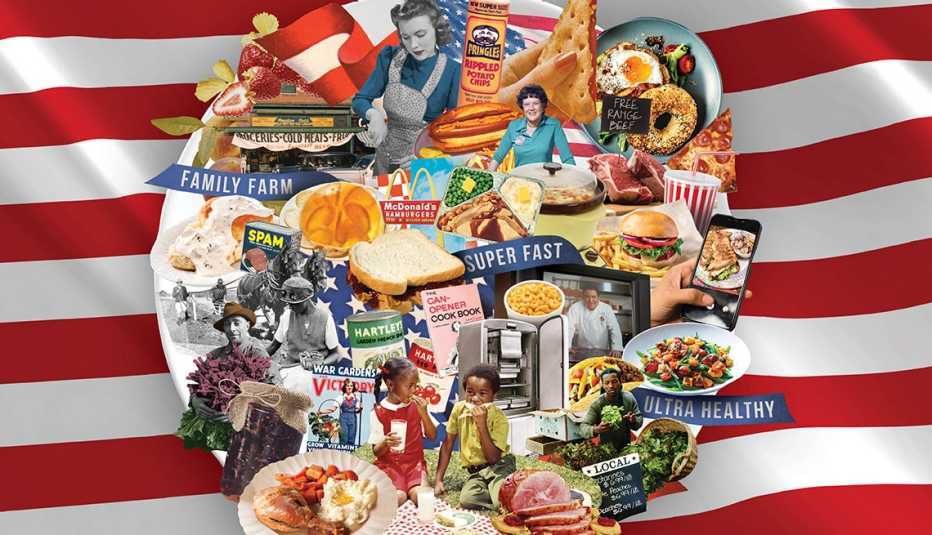Diet culture in the United States is an everchanging fluid phenomenon, with roots stretching back into American history. The popularization behind certain trends, at times, seems to follow no specific scientific reason. While the media loves to portray diet as an easily black or white idea with a simple approach, the reality is much more complicated.
As Katharina Vester, a professor of history at American University explains, diet culture in the United States has prominent beginnings in antebellum America. The need to restrict body fat originally began in Europe (dating back as early as the 1670s) but only began to rise in popularity and spill over into America during the late 1800s. However, these ideals only pushed men to lose weight and created an entirely different set of requirements for women. Women’s ‘body ideals’ began as a symbol of a woman’s health and fertility. Men were instructed to lose weight and become muscular, while women were told that being a larger size communicated their readiness to bear children. Dieting ideals and approaches evolved drastically, beginning with a way to promote masculinity and turning into a strange dichotomy that both empowered yet restricted women’s freedom. While it gave women the power to advocate for their own bodies, this practice was reserved for white, middle-class women.
These gender divides became overshadowed by processed food in the 19th century. Understanding food and diet in American soon became impossible without tracking the rise of this new phenomenon. Alice Callahan, author of “How America Got Hooked on Ultraprocessed Food” is a New York Times reporter who focuses on nutrition biology and health. She holds a PhD in nutritional biology from the University of California, Davis. In her article, she examines how processed foods began dominating the American food supply. Beginning in the late 1890s, brands began releasing completely new products like Coca-Cola and Jell-o. Once companies began to innovate more, the food boom began. Processed foods became a way to feed soldiers during the World Wars and relieve housewives of their duties to cook food for the family from scratch. When innovations in crops and pesticides were discovered in the 1970s, the food industry exploded. Companies seized their chances to market these huge increases, arguing simplicity and convenience. Hook, line, and sinker, Americans took to these products. The processed food industry soon became a hegemon in American life.
Yet, diet soon became much more than just the foods that Americans ate. A variety of lifestyle changes impacted physique and health, leading to an obesity epidemic in the United States. Sleep, pesticides used on crops, and even air conditioning all play a role in one’s health. Decreased sleep can off balance hunger hormones, leading to a disrupted appetite. Air conditioning and heating, while incredibly helpful inventions, have decreased the amount of time humans spend shivering, which then leads to fewer calories expended on these bodily functions. While not inherently harmful, compounding dietary choices as well as external factors have contributed to both the well-being and harm of Americans. Understanding individual health becomes crucial as the media and different companies begin to push different diets on people. In a time of misinformation and new trends, self-awareness becomes key to maintaining a healthy lifestyle.
Sources:
Alten, Jennifer. “Machines Water Large Field.” Trade and Industry Development, Online Image, 25 Feb. 2018, www.tradeandindustrydev.com/industry/food-agriculture-related/communities-take-agriculture-food-production-next-13742. Accessed 6 Nov. 2025.
American Turf Register and Sporting Magazine. “Cover Page of the American Turf Register and Sporting Magazine from October 1839.” Wikimedia, Magazine, Oct. 1839, upload.wikimedia.org/wikipedia/commons/0/00/American_Turf_Register_and_Sporting_Magazine%2C_Oct_1839_cover.jpg. Accessed 4 Nov. 2025.
Banting, William. “A Letter on Corpulence.” The Project Gutenberg EBook of Letter on Corpulence, Addressed to the Public, Online Image, 1863, www.gutenberg.org/cache/epub/57545/images/cover.jpg. Accessed 6 Nov. 2025.
Callahan, Alice. “Freedom from Refrigerators and Processed Food.” The New York Times, Online Image, static01.nyt.com/images/2025/10/10/well/WELL-UPF-HISTORY37/WELL-UPF-HISTORY37-superJumbo-v2.jpg. Accessed 6 Nov. 2025.
Center For Disease Control, editor. “Trends in Obesity among Children and Adolescents Aged 2–19 Years, by Age: United States, 1963–1965 through 2017–2018.” CDC National Center for Health Statistics, Online Image, 29 Jan. 2021, www.cdc.gov/nchs/data/hestat/obesity-child-17-18/Estat-children-fig.gif?_=08745. Accessed 6 Nov. 2025.
“Coca-Cola Ad.” The New York Times, Online Image, static01.nyt.com/images/2025/10/08/well/WELL-UPF-HISTORY20/WELL-UPF-HISTORY20-superJumbo.jpg. Accessed 6 Nov. 2025.
Doherty, Judy. “The American Diet.” Food and Health, Online Image, www.foodandhealth.com/blog/2022-predictions-and-trends. Accessed 6 Nov. 2025.
Graham, Sylvester. “Treatise on Bread and Bread-Making.” The Gilder Lehrman Institute of American History, Online Image, 1837, www.gilderlehrman.org/sites/default/files/imagecache/inline-2col-float/essay-images/Graham.GgleBks.web_.jpg. Accessed 6 Nov. 2025.
“Grapefruit.” JustFit App, Online Image, 21 Feb. 2025, images.surferseo.art/545994f7-7542-407a-9e8b-adcc87f1f0e5.png. Accessed 6 Nov. 2025.
Graziano, Graziano. “American Diet Culture.” AARP, Online Image, 11 Sept. 2020, cdn.aarp.net/content/dam/aarpe/en/home/health/healthy-living/changing-food-trends/_jcr_content/root/container_main/container_body_main/container_body1/container_body_cf/container_image/articlecontentfragment/cfimage.coreimg.50.932.jpeg/content/dam/aarp/health/healthy-living/2020/08/1140-how-america-eats-hero.jpg. Accessed 4 Nov. 2025.
Historical Sewing. “1861 & Dressed for a Party.” Historical Sewing, Online Image, 11 Mar. 2011, www.historicalsewing.com/wp-content/uploads/1860-Sept-Godeys-Dressed-for-a-Party-300×185.jpg. Accessed 6 Nov. 2025.
Callahan, Alice. “How America Got Hooked on Ultraprocessed Food.” The New York Times, The New York Times, 16 Oct. 2025, www.nytimes.com/interactive/2025/10/16/well/eat/ultraprocessed-food-junk-history.html.
Vester, Katharina. “Regime Change: Gender, Class, and the Invention of Dieting in Post-Bellum America.” Journal of Social History, vol. 44, no. 1, Sept. 2010, pp. 39–70. EBSCOhost, https://doi.org/10.1353/jsh.2010.0032.
